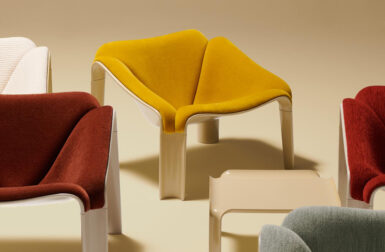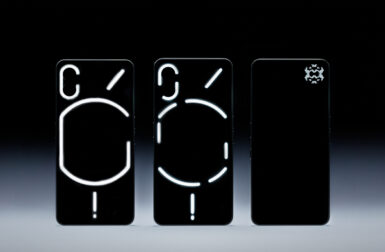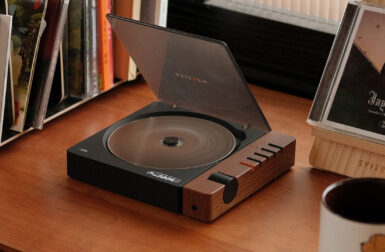
In this edition of The Tools That Make It Happen, I headed up to Rochester Institute of Technology (RIT) for two days of touring the campus, checking out student projects and learning what being an RIT student is all about. Since I’ve never been a design student myself, it was pretty eye-opening! My wonderful host, Josh Owen, who is a designer but also Associate Professor and Chair of the Industrial Design Program at the School of Design, took me around to all the different design departments and he, alongside design professor Alex Lobos, even gave me a tour of the brand new (not yet opened) Golisano Institute for Sustainability (I got to wear a hard hat, safety glasses, and reflective vest!).

RIT ceramics studio
Instead of focusing on tools and technology this time, I wanted to come at it this time from the angle of the student and teaching culture. What I immediately learned was that RIT encourages interdisciplinary study and cross-collaboration. Because RIT is situated within a university setting, industrial design students are working alongside professional programs, arts and crafts students, as well as the sciences and humanities. Josh explains that the industrial design program “encourages cross-pollination. We have had exciting collaborations with a variety of disciplines and centers across the university. Our course structure and curriculum is set up to support exposure to other disciplines. We encourage students to chose ‘concentrations’, which help students focus on a particular area of interest and take relevant courses across the university.”
I experienced an example of this on my visit when speaking with a student who had invented a product in collaboration with other students who were not in the ID department, and was currently using a room in the Simone Center for Innovation, which encourages student entrepreneurship, as an extra workspace.

A student’s work in the furniture design studio

The glass studio at RIT
Despite the quickly-changing technology, prototyping and manufacturing innovations, the industrial design department remains constant. “We still teach many of the same basic skills that form the core of what has always been a strong Industrial Design curriculum,” Josh says, “We teach students problem definition, research methods, divergent and convergent thinking, communication skills, and give them the tools to execute their ideas. Technologies are used to support and expand these areas. As with any new tools, we carefully measure and test the risks and benefits before adopting and fully integrating them into our activities.”

Drawings from undergraduate ID fundamentals course

Forms from fundamentals course
But, there are tools that students get a hold of themselves – the main one being “the Internet.” I asked Josh about the rise of student entrepreneurship due to the Internet and how social media and funds-raising sites like Kickstarter have affected design teaching – both good and bad. He says that the biggest challenge is “the risk of putting immature ideas into the marketplace that run can do more harm than good,” but that the immediacy and accessibility of these tools also empowers students and “offer meaningful experiences that can open doors to early career successes.” In the ID department, they embrace these opportunities and try to move them through coursework and discussion.

Photo by Elizabeth Lamark, RIT, ETC Photo
Another notable characteristic about RIT is its long-standing alumni relationship. It’s apparent as you walk into the building and are immediately greeted by Design Autopsy, a new exhibit that will rotate and feature industrial designer alumni who have made significant contributions to design. Some of this year’s notables: Scott Wilson, Joyce Thomas, and Patricia Moore.

Furthermore, RIT has a unique shop on campus that sells alumni-designed products from artwork to sculptures to books and textiles. I think that’s such a great idea that the school continues to support its alumni after they’ve graduated, but also bridges a gap between alumni and current students. This strong connection is deeply entrenched in the culture of the school and the important role it places on mentoring. Josh explains, “Long-time faculty members exemplify the sort of mentoring that encourages longterm connections. Many students take the opportunity to work or intern for our faculty and gain important insights into their careers through these interactions. I have personally been pleasantly surprised by the outpouring of support from alumni, most recently in the context of our Design Autopsy project which engaged alums. I was impressed by the quick response and enthusiasm going as far back as the first class of 1974.”

Besides relationships with alumni, the ID department also encourages many relationships through coursework with companies so that students can begin to have real-world experiences. Josh has done an excellent job of spearheading this with Metaproject, a student course in which they have the opportunity to work with an industry sponsor who (in this current iteration) is giving students the chance to commercialize their outcomes. You might remember that we featured Metaproject 02 earlier this year, which was exhibited at Wanted Design during New York Design Week. The sponsor was Corning Museum of Glass (CMoG) and so the students worked primarily with glass.
This year, Metaproject 03’s partner is Areaware, and with them, students are focusing on developing wooden toys. “The course offers students valuable insights into how an avant-garde company like Areaware behaves. Areaware has been looking in earnest to find the next generation of designers in the USA. They feel strongly (as do I) that these talents can be found emerging from top design institutions such as RIT. Having worked with Areaware in a professional context prior to this project afforded me with a knowledge of their process allowing me to serve as a unique, professional guide for the students in their work with this client. A relationship like this must be built on mutual trust and admiration,” Josh told me. I can’t wait to show you more about Metaproject 03 – I’ll be sharing the results of the project in the Spring.
I ended my trip with a tour of the Golisano Institute for Sustainability, the new campus building that is not only a super green building in itself, but will house the sustainability department and research facilities for sustainable production, sustainable energy, sustainable mobility and ecologically friendly information technology systems. I thought it was pretty cool that they had a sustainability department to begin with. The building, which will open soon, features a green roof, special windows that adapt to light and energy and will use almost 70% less energy than a building with standard materials and construction.

My first hard hat experience. Here, I am learning about the sustainable features of the new building with Paul Stiebitz, Professor Interim Director, NanoPower Research Labs, and Associate Academic Director, Golisano Institute for Sustainability
In addition to the school tour, we also spent a morning touring artist and furniture maker living legend, Wendell Castle‘s studio, where I took a ton of photos but can’t post about them until his new exhibition has opened. You can see some sneak peeks of his workshop on Instagram and, when I say that this guy has the most impressive collection machines, tools and work rooms I’ve ever seen, I am not kidding. However, I think my favorite thing about my trip was seeing the on-campus Vignelli Center for Design Studies that houses the permanent collection of Massimo and Lella Vignelli’s archives including furniture pieces, prototypes, drawings, and even their clothing patterns. That post is coming soon, so stay tuned!
I am very grateful to Josh Owen and to Rochester Institute of Technology for hosting my trip.








